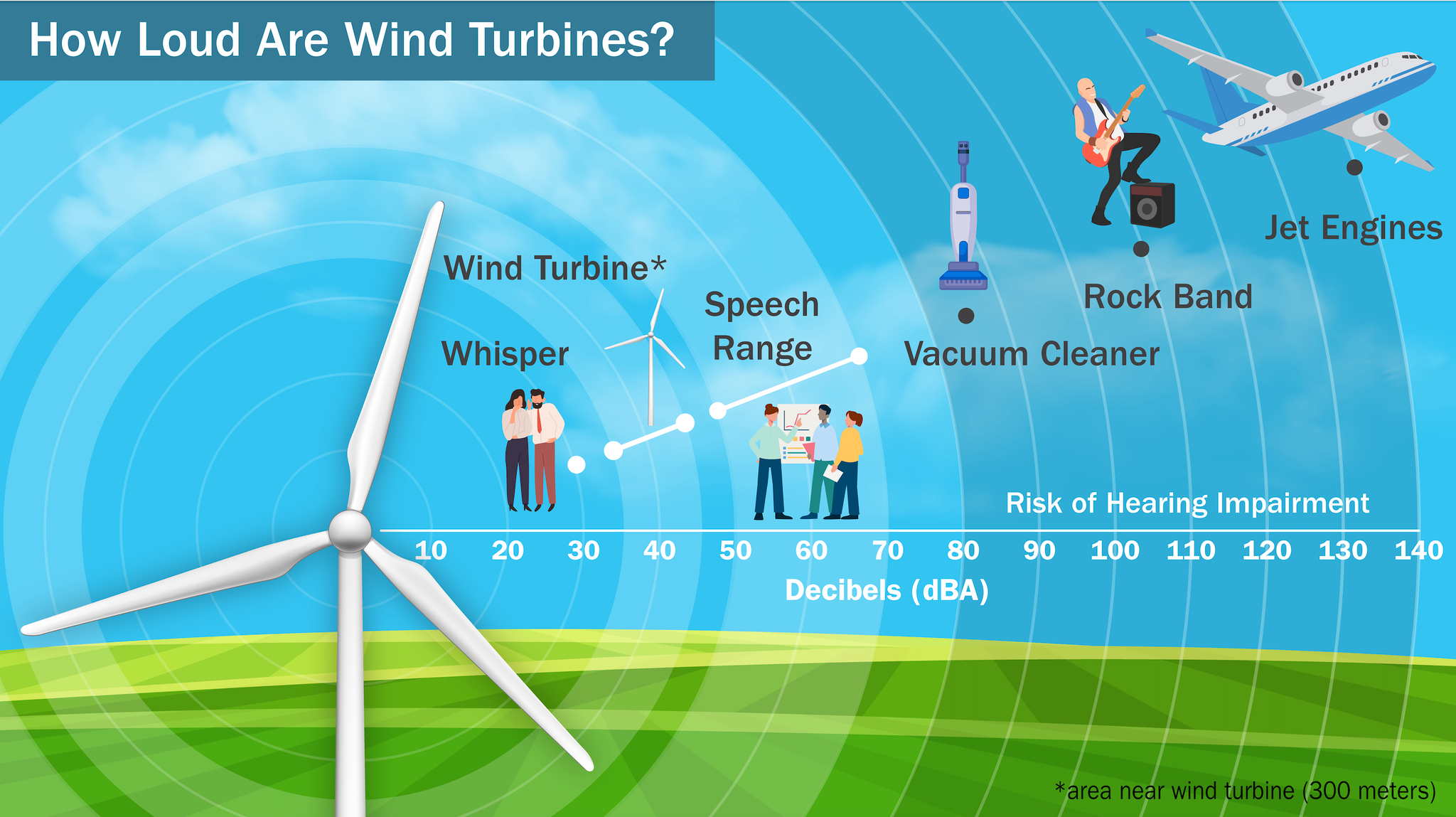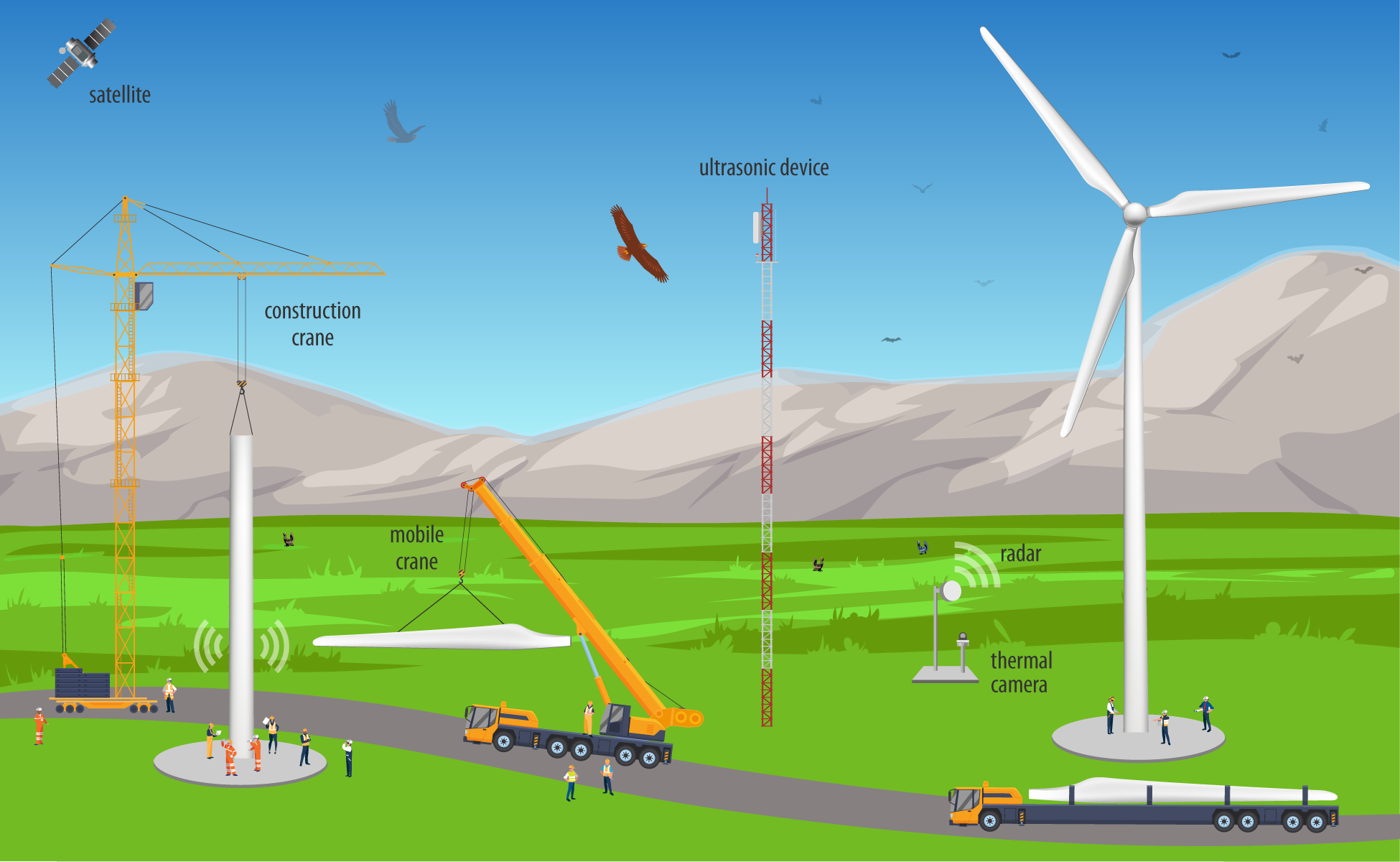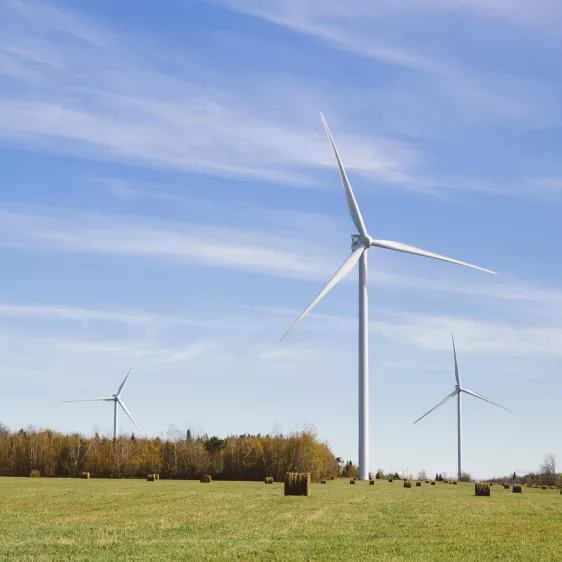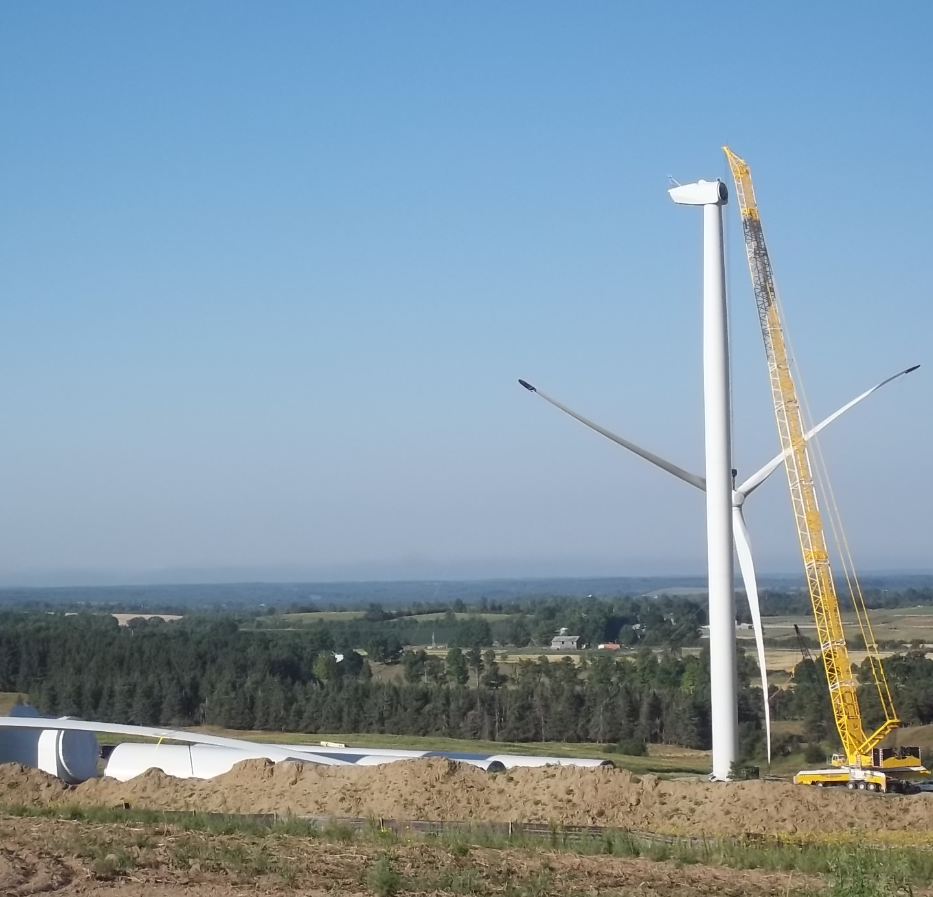The OGM Interactive Canada Edition - Summer 2024 - Read Now!
View Past IssuesWind energy is at the forefront of the global transition to renewable energy, rapidly emerging as the most cost-effective source of new electricity generation in Canada. Over the past decade, more wind capacity has been installed than any other energy form, solidifying its crucial role in the nation’s energy landscape.
Canada’s stringent environmental assessment protocols, among the highest in the world, ensure robust protection for its citizens against potential impacts from energy projects. Yet, as wind energy and hydrogen development gain momentum, it is essential to address and navigate the valid concerns that accompany their emergence. To do so, engagement is not only essential it’s foundational to every project and every community.
People resist being dictated to and are wary of companies that seem to prioritize their own interests without considering local impacts. Communities respond more positively when they are actively involved in projects through a fair and inclusive process that emphasizes mutual benefit.
Including the community in wind energy projects accelerates development and approvals through effective engagement, community-driven solutions, and benefit sharing. Communities must be empowered and supported to participate in renewable wind energy initiatives, leveraging their unique insights to meet global energy demands and combat climate change.
Engaging communities in the design and development of wind energy projects fosters a sense of ownership and collaboration. By ensuring that community members have a meaningful influence on project outcomes, we create a fair process that delivers tangible benefits for both corporations and the community.
This inclusive approach not only enhances community support but also strengthens the project’s success, demonstrating that “doing wind energy well” means prioritizing community, contribution, fairness, inclusion, and working together. When people are heard and validated, that’s when the magic happens. Projects progress and people align.
Addressing the top concerns about wind energy requires recognizing the unique perspectives of different communities. Residents of rural wind energy locations often have the best development solutions. Harnessing collective community intelligence is a powerful resource for achieving the best outcomes. Therefore, the most pressing objections to wind energy should be brought to the forefront, scrutinized, and creatively resolved in collaboration with the local communities. Common wind energy concerns are listed below however given that every community has differing variables and considerations, these considerations would just be the tip of the iceberg.
Aesthetic Impact and Visual Pollution
• Concern: Wind turbines are seen as eyesores that disrupt natural landscapes and
seascapes.
• Solution: Those in the community can have powerful input when it comes to wind turbines, their placement, and their implementation. Modern wind turbine designs integrate better with their surroundings, often incorporating elements that blend into the landscape or even serve as public art. Surveys indicate that public acceptance increases as people become more aware of the environmental benefits of wind energy. For instance, studies in New England found that communities often accept wind farms more readily after they are built, appreciating the balance between functionality and aesthetics (WindCycle) (WINDExchange).
Noise Pollution
• Concern: The noise generated by wind turbines can be disturbing to nearby residents.
• Solution: Advances in turbine technology have significantly reduced noise levels. Modern turbines use quieter blades and improved insulation to minimize noise and proper site selection ensures that noise impacts on communities are minimal (WindCycle)
(WINDExchange).

Impact on Wildlife
• Concern: Wind turbines threaten birds and bats, disrupting local ecosystems.
• Solution: While wind turbines can kill birds and bats, the impact is minimal compared to other human activities. Buildings kill up to 988 million birds annually, and outdoor cats kill between 1.3 billion and 4 billion birds each year. A 2024 study found no statistically significant effect of wind farms on bird counts while fracking reduced bird populations near shale and oil production sites by 15%. Climate change poses a severe threat to bird species, with the National Audubon Society estimating that two-thirds of North American bird species
are at risk due to habitat changes caused by global warming (WindCycle)(WINDExchange).

Intermittency and Reliability
• Concern: Wind energy is intermittent and cannot provide a consistent power supply.
• Solution: Advances in energy storage and grid management technologies are improving the reliability of wind energy. Additionally, wind farms are often complemented by other renewable sources to ensure a steady power supply (WINDExchange). For example, the integration of battery storage systems and the use of smart grid technologies enhance the stability and reliability of wind energy.
High Initial Costs
• Concern: The initial investment in wind energy infrastructure is high.
• Solution: Despite the upfront costs, wind energy offers long-term economic benefits, including low operating and zero fuel costs. In Canada, wind energy projects provide significant economic benefits through tax payments, lease payments, and direct contributions to local communities. Wind energy is now the lowest-cost source of new electricity generation in Canada, with more capacity installed over the last decade than any other form (WindCycle) (WINDExchange).
Land Use and Space Requirements
• Concern: Wind farms require large areas of land or sea, which could be used for other purposes.
• Solution: Offshore wind farms utilize ocean spaces without competing for land use, while onshore wind farms can coexist with agricultural activities. Canada’s largest wind farm, Black Spring Ridge in Alberta, exemplifies how large-scale wind farms can be effectively integrated into the landscape (WindCycle) (WINDExchange). The 300 MW Blackspring Ridge Wind Project located in Alberta became operational in 2014. EDF Renewables handled the development of this project. The project represents the largest investment in wind energy in Western Canada. More than 350 jobs were created during the construction phase with 20 permanent operations and maintenance jobs. The electricity is sold into the Alberta power pool with pricing substantially fixed through mid- and long-term contracts.
Economic Viability Without Subsidies
• Concern: Wind energy projects are not economically viable without government subsidies.
• Solution: The cost of wind energy has decreased dramatically, making it competitive with fossil fuels. Many projects are now viable based on market prices alone. For example, the cost of onshore wind power has fallen by 70% between 2009 and 2020, making it one of the cheapest sources of new electricity generation (WINDExchange).
Decommissioning and Waste
• Concern: Decommissioning wind turbines and managing waste materials can be challenging and environmentally harmful.
• Solution: Advances in recycling and repurposing technologies for turbine materials are ongoing. Decommissioning costs are often included in the initial project planning, ensuring funds are available for proper dismantling and disposal (WindCycle) (WINDExchange). Additionally, companies are developing innovative ways to recycle turbine blades, such as using them in the construction of bridges and other infrastructure.
Grid Integration Challenges
• Concern: Integrating wind energy into existing grids can be technically complex and costly.
• Solution: Smart grid technologies and modern infrastructure upgrades are facilitating the seamless integration of renewable energy sources, including wind, into power grids. For instance, the implementation of advanced grid management systems and the use of digital
technologies help balance supply and demand, reducing the complexity and cost of grid integration (WINDExchange).
Impact on Property Values
• Concern: Proximity to wind farms can negatively affect property values.
• Solution: A study by Lawrence Berkeley National Laboratory found that homes within one mile of a commercial wind turbine experienced an 11% decline in value after the announcement of a new project, but values returned to pre-announcement levels within three to five years after the project became operational. Modern turbines are more efficient and fewer are needed, reducing potential negative impacts. Additionally, taxes from wind projects provide economic benefits, improving local infrastructure and making communities more enticing, which can in turn, further increase property values.
• Environmental Benefits: Wind energy is a clean, renewable source that significantly reduces greenhouse gas emissions and pollution compared to fossil fuels. The production of electricity from wind energy generates no greenhouse gas emissions, no air or water pollution, and no toxic or hazardous wastes (WindCycle) (WINDExchange).
• Energy Independence: Developing wind energy reduces dependence on imported fuels, enhancing national energy security (WINDExchange).
• Economic Growth and Job Creation: The wind energy sector creates numerous jobs in manufacturing, installation, maintenance, and operations, contributing to economic growth. Wind energy projects provide significant economic benefits to the hundreds of communities across Canada host them, through tax payments to municipalities, lease payments to landowners, and direct financial contributions (WINDExchange).
• Cost-Effectiveness: Wind energy is becoming one of the cheapest sources of electricity due to technological advancements and economies of scale. Wind turbines use the power of the wind to generate electricity. The wind turns the blades of the turbine rotor, which are attached to a
driveshaft. The driveshaft then spins a generator to create electricity (WindCycle) (WINDExchange).
• Scalability: Wind energy projects can be scaled to meet local or national energy needs, from small community projects to large offshore wind farms. Canada’s largest wind farm, Black Spring Ridge, located in Vulcan County, Alberta, is made up of 166 wind turbines. On the other hand, communities like Richibucto and Rexton in New Brunswick have installed a single wind turbine to feed power into the grid (WINDExchange).
• Sustainable Development: Wind energy promotes sustainable development by providing a reliable, long-term energy solution with minimal environmental impact (WINDExchange).
• Community Benefits: Wind projects can provide significant economic benefits to local communities, including landowner lease payments and increased tax revenues. Wind turbines have been deployed by corporations, First Nations, municipalities, and community organizations
across Canada (WINDExchange).
• Technological Advancements: Continuous improvements in turbine technology are increasing efficiency, reducing costs, and minimizing environmental impacts. Wind turbines come in different sizes and can be deployed in different configurations. In Canada, the overwhelming majority of wind turbines are utility-scale and deployed onshore, in a variety of configurations, to feed power directly into the electricity grid (WINDExchange).
• Complementary to Other Renewables: Wind energy works well in conjunction with other renewable sources to provide a balanced and reliable energy mix. While wind, solar, and energy storage are unique and distinct technologies, they are natural allies (WINDExchange).
• Global Energy Transition: Wind energy is a key component in the global transition to a low-carbon energy future, helping to meet international climate goals and reduce the impacts of climate change. Globally, there is increasing deployment of much larger offshore wind turbines that take advantage of stronger and more consistent winds blowing over the ocean. While there are currently no examples in Canada, some projects have been proposed for future development
(WINDExchange).
Canada’s wind energy sector is experiencing robust growth, supported by favorable market conditions and substantial investments. The upcoming projects highlight Canada’s commitment to expanding its renewable energy infrastructure, which is crucial for reducing carbon emissions and meeting energy demands sustainably.
Wind energy development faces certain criticisms, but the benefits far outweigh the concerns. By addressing issues through technological advancements, strategic planning, and community engagement, wind energy can continue to play a vital role in providing clean, sustainable, and economically viable power for the future. As the world moves towards a greener future, wind energy stands as a beacon of hope and progress for a new energy mix, in a sustainable new energy world.
_______________________________________________
Wind energy is Canada’s fastest-growing and lowest-cost source of new electricity generation. The country has seen significant installations of wind energy capacity over the past decade. Here are the top 5 on-land wind energy projects in Canada.
Sharp Hills Onshore Wind Farm
• Location: Alberta
• Capacity: Up to 300MW
• Turbines: 71 Enercon E138 4.2MW turbines
• Completion: Scheduled for 2023

Wild Rose Onshore Wind Farm
• Location: Alberta
• Capacity: Up to 409MW
• Turbines: Phase 1: 70 Alstom ECO110 3MW turbines, Phase 2: 63 turbines
• Development Stage: Expected to start in 2023

Wolfe Island Shoals Offshore Wind Farm
• Location: Lake Ontario
• Capacity: Planned 300MW
• Status: On hold pending government responses
Queen Charlotte Islands Offshore Wind Farm
• Location: Hecate Strait near Queen Charlotte Islands
• Capacity: Up to 396MW from 110 turbines
• Status: Under development
Yarmouth Offshore Wind Farm
• Location: 20km off the coast of Yarmouth, Nova Scotia
• Capacity: 1GW
• Investment: $4 billion
• Development: Planning phase, expected to start operating in 2025
____________________________________________
Newfoundland and Labrador has completed its call for bids for pioneering wind-hydrogen projects, marking a significant stride towards sustainable energy development for the province. In 2023, Minister Andrew Parsons, KC, announced that four companies have been selected to receive Wind Application Recommendation Letters for wind energy development on provincial Crown Land.
• EverWind NL Company
• Exploits Valley Renewable Energy Corporation
• Toqlukuti’k Wind and Hydrogen Ltd. (ABO)
• World Energy GH2 Inc.
These projects are anticipated to span 35 to 40 years, contributing an estimated $206.2 billion to the provincial GDP and generating $11.7 billion in revenue. Peak employment during construction is anticipated to reach 11,694 full-time equivalents.
Newfoundland and Labrador’s abundant onshore wind resources position these projects to power turbines for electricity generation and support industrial users. Additionally, these initiatives aim to harness wind energy for the production and export of hydrogen and ammonia, aligning with global energy trends toward decarbonization.
Newfoundland and Labradorians will set the stage for an energized future for many years to come, with wind energy fuelling global energy demand and supporting a sustainable new energy future for our kids!
Lawrence Berkeley National Laboratory
New England Wind Energy Education Project
Canadian Wind Energy Association
Energy Information Administration
Government of Newfoundland and Labrador
Canadian Renewable Energy Association
Did you enjoy this article?